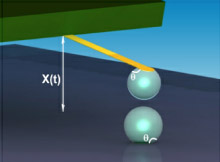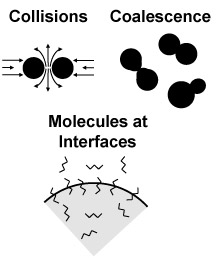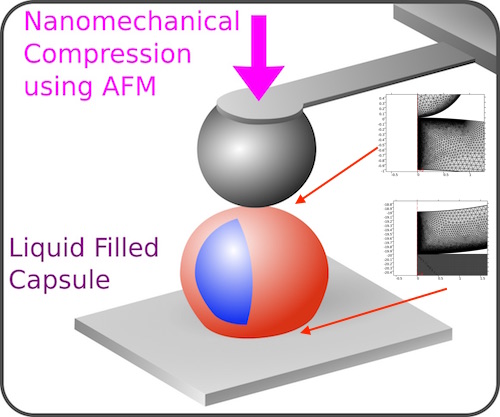Dynamic forces between drops and bubbles

The objective of this research is to develop novel experimental and theoretical methods to measure and predict the interactions between droplets and bubbles that underpin the innovative applications of foams and emulsions. We study how the flow between and the deformation of droplets and bubbles during collisions in emulsions and foams are mediated by the molecules present at the droplet or bubble interface.

We have developed innovative experimental methods using atomic force microscopy to control dynamic interactions, collisions and coalescence between droplets and bubbles. The approach provides a “front seat” view of how drops or bubbles collide in solution. We are able to better understand the physical mechanisms behind the intercoupling of the fluid flow between droplets or bubbles, the deformation of their interfaces and the interaction forces between droplets or bubbles depending on the types of molecules coating their interfaces. The analysis of these measurements is reliant on the sophisticated modeling of these experiments by theory. This level of integration has led to the use of these models to help guide experimental design. We have used this approach to probe a large range of problems from the effect of surface active molecules on droplet to stability to observing profound differences in dynamic forces by changing the hydrodynamic boundary conditions of the systems studied.

Other areas of study have included measuring the native surface charge of water drops or oil drops in the absence of surfactants, examining the hydrophobic force between oil drops and probing the interplay between drop and bubble deformation in the presence of depletion or structural forces with attractive of oscillatory force behaviours with drop or bubble separation. We have also developed the expertise to micro-fabricate custom AFM micro-cantilevers with flat circular paths to immobilise the drop or bubble in a well-defined geometry.
This work has involved strong collaborative links with the school of chemistry and the department of mathematics and statistics.
Nano-mechanical properties of soft materials

The elasticity of soft materials is of fundamental importance to a wide range of engineering applications. The resistance of a material to elastic deformation is known as the “Young’s modulus”, E. On a macroscopic scale, a common repeatable method of determining the Young’s modulus of materials is a mechanical test where the material is indented under prescribed load and E is calculated from the force versus indentation data. However, with the increase of engineered materials on smaller scales, ie: particles, capsules or films or coatings on surfaces, on the micro-scale, the need for nano- and micro-mechanical testing and analysis methods has arisen.
We have extended our expertise with dynamic force measurements using the Atomic Force Microscope on soft systems to the measurement and detailed analysis of the nano-mechanical properties of soft systems including living cells, hydrogel particles, capsules, and surface coatings in a number of applications from encapsulation in processed foods to examining the suitability of a micro-particle’s modulus for drug delivery.